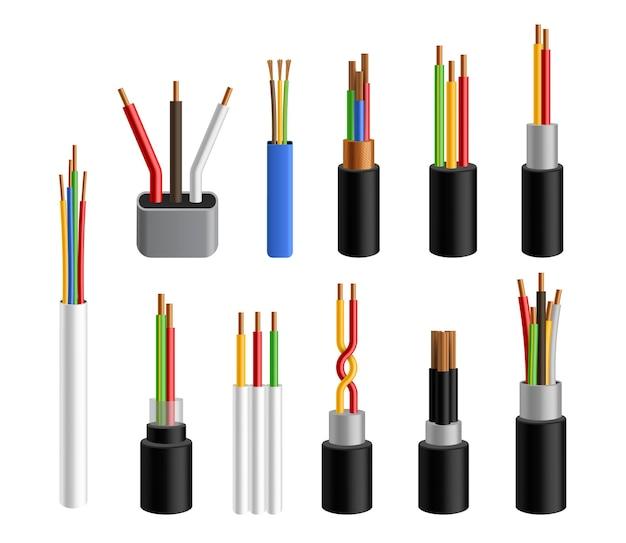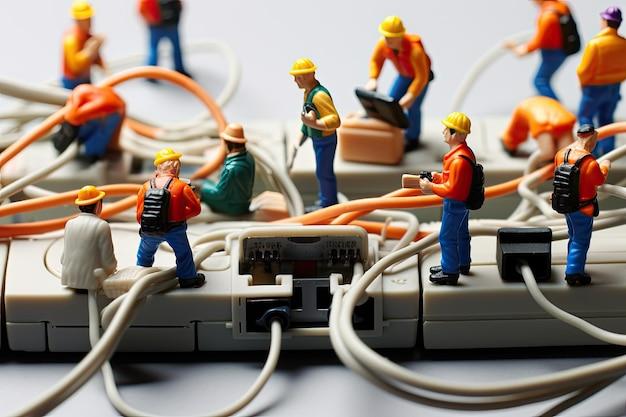Insulators and conductors are like two sides of a coin in the world of electricity. While conductors allow the flow of electric current with ease, insulators, on the other hand, resist the flow of electricity. But have you ever wondered why insulators are such bad conductors of electricity? In this blog post, we will delve into the fascinating world of insulators and explore the reasons behind their not-so-conductive nature.
We will uncover the inner workings of insulators, understand how they differ from conductors, and answer questions like why aluminum foil is a bad insulator, whether platinum can be an insulator, and even if rice or plastic can effectively insulate. So, if you’ve ever been curious about the science behind insulators, their applications, and how they contribute to our daily lives, this is the perfect read for you. Let’s dive in and unravel the mysteries of insulators!
Why Are Insulators Bad Conductors Of Electricity
Insulators: the introverted, anti-social cousins of conductors when it comes to electricity. While conductors embrace the electric current like a long-lost friend, insulators have an uncanny ability to repel it. But why are these materials so resistant to electrical flow? Let’s delve into the electrifying world of insulators and discover the shocking truth behind their disdain for conducting electricity.
The Clandestine Electrons
At the heart of every insulator’s aversion to electrical current lies its atomic structure. Unlike conductors, which have electrons that venture freely through the material, insulators keep their electrons tightly under wraps. Picture a crowded nightclub full of lively dancers—a conductor’s electrons are the movers and shakers grooving on the dance floor, free to boogie with neighboring atoms. But the electrons in an insulator? They’re the wallflowers hiding timidly in the corner, avoiding any interaction with other atoms.
The Unbreakable Bond
To understand why insulators keep a tight grip on their electrons, we must turn to their strong atomic bonds. Insulators are built up of atoms that are in a committed relationship—they share electrons with each other and aren’t willing to share the love with outside electrons. This powerful bond creates a formidable barrier that repels any stray electrons attempting to pass through the material.
The Electric Conundrum
Even if we manage to coax an insulator into accepting some extra electrons, it still won’t budge. This unyielding behavior is due to the nature of insulators’ valence electrons, the electrons in the outermost energy level of an atom. These valence electrons are tightly bound to their parent atoms, resisting any effort to set them free and flow through the material.
The Forbidden Pathway
Unlike swingers at a party, insulators refuse to take part in the electric current flow. Their atomic structure and valence electrons form a daunting blockade for the free movement of electrons, preventing the establishment of a conductive pathway. It’s a bit like trying to navigate your way through a crowded dance floor when everyone around you is steadfastly standing still.
The Energized Opposition
To add insult to injury, insulators have a secret weapon that further fuels their antagonism towards conducting electricity—dielectric strength. If the electric field becomes too intense, insulators raise their defenses and withstand the electrical pressure, refusing to let the current pass through. It’s like a superhero discovering their electrifying powers and using them to push back against the forces of conductivity.
The Wrath of Insulators
So, the next time you encounter an insulator, remember its underlying reasons for rejecting the flow of electricity. It’s not that they don’t want to join the party; it’s just that they’ve built impenetrable walls and taken a solemn oath to resist the temptations of conductivity. In their silent rebellion, insulators play a crucial role in our world, keeping electricity contained and preventing dangerous mishaps. They may not be the life of the electric party, but they serve an essential purpose nevertheless.
FAQ: Why Are Insulators Poor Conductors of Electricity
Insulators play an important role in our daily lives by keeping us safe from electrical hazards. But have you ever wondered why some materials can’t conduct electricity while others can? In this FAQ-style guide, we’ll address common questions about insulators and explore why they are bad conductors of electricity.
What are some examples of insulators
There are plenty of examples of insulators in our surroundings. Here are four common ones you may be familiar with:
-
Rubber gloves: These trusty gloves protect electricians and workers from getting shocked while working with live wires.
-
Glass: Ever wondered why you’re safe behind a window during a thunderstorm? That’s because glass is an excellent insulator.
-
Plastic: From the insulation on electrical wires to the casing of our electronic devices, plastic keeps us safe by preventing electrical currents from flowing where they shouldn’t.
-
Ceramic: Found in everything from coffee mugs to electrical insulators, ceramic materials provide excellent electric insulation.
Is aluminum foil a good insulator
Although aluminum foil is great for wrapping leftovers, it’s not the best choice when it comes to insulation. Aluminum foil acts as a conductor, allowing electricity to flow through it. So, if you’re looking to keep the current under control, you’re better off considering other insulating materials.
Can platinum be used as an insulator
Platinum, a shiny and prized metal, may have numerous applications, but insulation isn’t one of them. Platinum is actually a good conductor of electricity due to its high electrical conductivity. So, instead of using it to block electrical currents, we often find platinum being used in various electrical components.
How do insulators work
Insulators work by impeding the flow of electrical current. Unlike conductors, where electrons can move freely, insulators have tightly bound electrons that do not move as easily. This creates a significant resistance to the flow of electricity, effectively preventing it from moving through the material.
Is rice a good insulator
While rice may be a fantastic companion to our favorite dishes, it doesn’t fare well as an insulator. Rice grains are not known for their ability to resist the flow of electricity, so it’s best to leave them out of your electrical projects and stick to using proper insulating materials.
Is plastic a good insulator for ice
When it comes to keeping our drinks cool, plastic can be a reliable insulator. The low thermal conductivity of plastic makes it a suitable material for insulating ice. So, next time you’re enjoying a chilled beverage from a plastic cup, give a nod to the insulating power of this versatile material.
Is water an insulator
Pure water, surprisingly, is not a good conductor of electricity. However, the presence of impurities, such as dissolved salts or minerals, can turn water into a conductor. So be cautious when mixing electricity and water, as it’s the impurities within the liquid that allow the flow of electrical current.
What are the applications of insulators
Insulators find applications in various fields, protecting us and facilitating the safe use of electricity. Some common applications include:
-
Electrical wiring: Insulating materials like rubber, plastic, and ceramic are used to coat electrical wires, protecting us from electrical shocks and preventing short circuits.
-
Electronic devices: Insulators are vital components in electronic devices, safeguarding delicate circuits and preventing the unwanted flow of electricity.
-
Energy transmission: High-voltage power lines rely on insulators to minimize energy loss by preventing electricity from escaping the power lines.
How can I insulate cheaply
If you’re on a budget and looking for cost-effective insulation options, consider a few DIY strategies:
-
Weatherstripping: Seal gaps and cracks around windows and doors with weatherstripping materials to prevent heat loss or entry of cold air.
-
Insulating curtains and blinds: Cover windows with thick curtains or thermal blinds to provide an extra layer of insulation and reduce heat transfer.
-
Draft stoppers: Place draft stoppers along the bottom of doors to prevent cold air from sneaking into your home.
These affordable solutions can help you save energy and reduce your electricity bills without breaking the bank.
What are two examples of insulators
Here are two additional examples of insulators:
-
Styrofoam: This lightweight material is often used for insulation purposes due to its low thermal conductivity.
-
Wood: From wooden houses to the handles of tools, wood offers both electrical and thermal insulation properties.
Remember, insulators come in various forms and materials, and understanding their characteristics can help you make informed choices in different situations.
Now that you have a better understanding of why insulators are poor conductors of electricity, you can appreciate the vital role they play in keeping us safe and our electrical systems functioning properly. So, the next time you spot an insulator, give it a nod of appreciation for its electricity-blocking powers!

